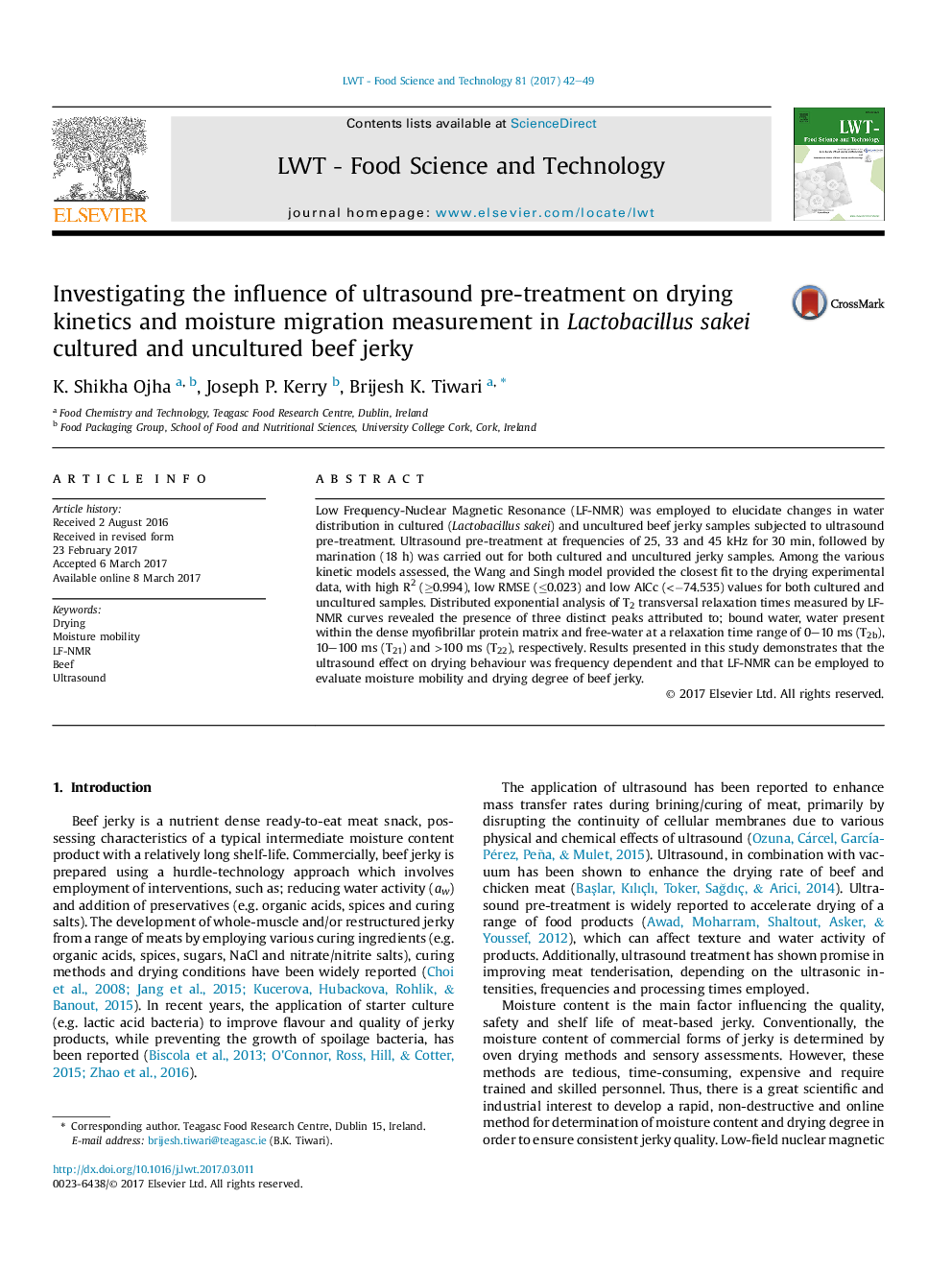| Article ID | Journal | Published Year | Pages | File Type |
|---|---|---|---|---|
| 5768472 | LWT - Food Science and Technology | 2017 | 8 Pages |
â¢Drying behaviour is ultrasonic frequency dependent.â¢Ultrasound can enhance marination rates.â¢LF-NMR can be employed for water mobility and drying degree of beef jerky.
Low Frequency-Nuclear Magnetic Resonance (LF-NMR) was employed to elucidate changes in water distribution in cultured (Lactobacillus sakei) and uncultured beef jerky samples subjected to ultrasound pre-treatment. Ultrasound pre-treatment at frequencies of 25, 33 and 45 kHz for 30 min, followed by marination (18 h) was carried out for both cultured and uncultured jerky samples. Among the various kinetic models assessed, the Wang and Singh model provided the closest fit to the drying experimental data, with high R2 (â¥0.994), low RMSE (â¤0.023) and low AICc (<â74.535) values for both cultured and uncultured samples. Distributed exponential analysis of T2 transversal relaxation times measured by LF-NMR curves revealed the presence of three distinct peaks attributed to; bound water, water present within the dense myofibrillar protein matrix and free-water at a relaxation time range of 0-10 ms (T2b), 10-100 ms (T21) and >100 ms (T22), respectively. Results presented in this study demonstrates that the ultrasound effect on drying behaviour was frequency dependent and that LF-NMR can be employed to evaluate moisture mobility and drying degree of beef jerky.
